 Your new post is loading...
 Your new post is loading...
Welcome back to the countdown of 50 Brands With Amazing Brand Stories. I’ve shared some of my favourite stories so far, but now it gets down to the nitty-gritty as we delve into the top 20.Today we continue the countdown by looking at 20-11, but should you wish to see the previous editions, do so here: 30 – 21 l 40 – 31 l 50 – 41
... Now the new rage is “native advertising,” which is to say advertising wearing the uniform of journalism, mimicking the storytelling aesthetic of the host site.
Buzzfeed, Forbes, The Atlantic and, more recently, The New Yorker, have all developed a version of native advertising, also known as sponsored content; if you are on Buzzfeed, World of Warcraft might have a sponsored post on, say, 10 reasons your virtual friends are better than your real ones.It is usually labeled advertising (sometimes clearly, sometimes not), but if the content is appealing, marketers can gain attention and engagement beyond what they might get for say, oh, a banner ad.Mr. McCambley is wary.
He says he thinks native advertising can provide value to both reader and advertiser when properly executed, but he worries that much of the current crop of these ads is doing damage to the contract between consumer and media organizations....
In preparation for one of CMI’s upcoming reports, I’ve had the pleasure of meeting with a number of companies that are in what’s being called the “native advertising” space. Through this experience, I’ve come to the conclusion that, while the technique can potentially create significant value, native advertising is actually neither “native” nor “advertising.” It is simply one aspect of the larger discipline we know of as branded content marketing. Native by any other name According to Wikipedia (which I chose not because of, you know, Wikipedia, but because it seemed to be the only place offering one up), native advertising is defined as: “…a method in which the advertiser attempts to gain attention by providing valuable content in the context of the user’s experience. Native ad formats match both the form and the function of the user experience in which it is placed.”
In short, native advertising takes content and places it in the context of a publisher’s site. So, whether you think of it as an advertorial, a paid guest post, a sponsored tweet, or just a really extensive ad, it’s basically paying for your engaging branded content to have a prominent and contextual place on somebody else’s platform.
An interactive media feature showing Hewlett-Packard's new shipping corridor along the route of the ancient Silk Road.
Via Marie-Sophie
When Google announced it was making its popular Google Reader service redundant this summer, it left millions in need of a new way to read and subscribe to their favourite web content. Step forward Flipboard, a digital social magazine that has quickly become an App Store favourite. Now in its second iteration, Flipboard has been boosted by a new personalised magazine creation tool that enables users to create their own custom magazine based on whatever they fancy.
Since its launch, the second version of Flipboard has amassed a further three million users to the service, and has already seen over 500,000 personalised magazines published....
Digital magazine publishing is increasingly within reach for all kinds of content creators — big, small, non-profit, for profit. As another way to reuse existing content and reach audiences, digital magazines might especially appeal to non-profit and public media news organizations.
At least two such organizations — ProPublica and Oregon Public Broadcasting — have launched free digital iPad magazines to showcase their reporting. The magazines are a low-cost way to gain exposure for their work because they repurpose existing digital content into a new storytelling medium. These organizations’ creative use of digital magazines shows how versatile digital magazines are, and early reactions to the publications suggest the experiments may be a success....
With HuffPost Partner Studio, the massive news aggregator and blog engine is getting into the advertising game...
Publishers are crazy for native advertising, but they’re stuck with a problem: Who is going to create it?
That’s why publishers like Vice and Gawker have begun partnered content-creation arms. Add The Huffington Post to the mix. This week it is officially taking the wraps off its new in-house branded content agency, HuffPost Partner Studio. Its charter is to make advertising that looks like regular Huffington Post content. For example, there’s this infographic for “Paranoia,” a new film with Harrison Ford and Gary Oldman, and this L’Oréal editorial about why “your daughter is a dork, and that’s okay.
”While HuffPost has hosted sponsored content for a while, this new in-house agency will do things a bit differently than how it previously handled sponsored content....
Does this signal the beginning of the end for Forbes as a knowledgeable source of business information? Have they finally "jumped the shark" on their way to the exit? "Jumping the shark" is actually an expression that goes back to the TV sitcom series, Happy Days. It was a show that pictured everything as rosy and happy, with neat little endings that were all nicely tied up in twenty-two minutes. The chief influencers on that show were "The Fonz," who only had to give you a look to let you know you were in trouble, and Mr. Cunningham, who set down the rules of the family.
In the midst of its ten-year run the writers must have gotten tired or were negatively influenced by the Hollywood decision-makers, when they inexplicably decided to have their characters travel to Los Angeles. Well, one thing leads to another and Fonzie ends up responding to an assault on his courage by taking to water skis (wearing his leather jacket of course) and jumping over a shark.
The stunt was so ridiculous and out of character that "jumping the shark" eventually came to be known as the moment when a television show begins a decline that is beyond recovery. While Happy Days bravely soldiered on for a few more years, it was never really the same in the minds of viewers and critics. Since that time the meaning has been broadened to define the moment when a brand or creative effort begins to lose the qualities that initially defined its success. Some still refer to "New Coke" as the moment when the Coca-Cola Company jumped the shark....
... When most people think about the word story, they think about a narrative like “ Jack and Jill went up the hill.” Most of us have been taught that there are two basic kinds of story: fiction and nonfiction.
Metastory is actually a third kind of story. Metastory is story that is told through action. It is not a story that you say, it’s a story that you do. Every individual has one. And every company has one too.
The reason this is so important is that people are already innate storydoers themselves. They use the story of your brand or business to tell part of their own personal metastory. Put another way, people don’t buy products; they take actions that help advance their own personal metastory. As we grow up, all of us learn to manage our own metastory through our actions — the car we drive, the clothes we wear. All of these choices are components that we know people around us will use to piece our metastory together....
In 2014 "the press as you know it has ceased to exist. 20th century news organizations are an afterthought." See No. 18 below. Our contributor model, now three years in the making, continues to grow and evolve.
FORBES BrandVoice is widely considered a breakthrough product in the much-talked about world of native advertising. With 25 million monthly visitors (as measured by comScore), our audience is bigger and more engaged than ever. Still, disruption rules the news industry, advertising and the public relations business, too. With all the turmoil, here are 18 things on my mind as we prepare for product releases this fall....
Should your brand journalism site live on your corporate site, or be a separate news site? Here are the benefits of and the strategy behind both locations.
While Twitter and texting appear to be reducing our communications skills to the level of a grunt, there has been a spate of TV spots in which the power of the long copy has been applauded by the industry, consumers and award juries alike.
Spots like the multi-lauded “Born of Fire” spot for Chrysler by Wieden +Kennedy, which gave Detroit, a city considered lost for decades now, something to be proud of. These words didn’t just sell a car, they uplifted an entire city.I remember watching this ad in the jury room in Cannes and feeling the hairs on my arm stand up. It was also interesting that the power of the words were not lost on the international jury. Jokes and special effects used to be the way to win at Cannes. Maybe not so anymore....
Rebecca Jarvis, business and economics correspondent for CBS News, discusses the current state of journalism, what the future holds, and why companies are scooping up journalists to create rich content for their brands.
|
So what happens if you don’t wrap up your facts in emotion to form a story? Well, if your salespeople don’t introduce the main buying themes with a quick 2-minute story, won’t your salespeople sound like they are reading straight from a product manual? Without a story to give your product context, aren’t your customers left to try to figure out why it makes sense for them to buy, or even worse, why they should care?
And if your salespeople are selling how your product can improve results by 20%, don’t they end up sounding like every other software vendor? Won’t the prospect discount 90% of those claims?But what would happen if they instead shared a story about a similar customer. And this story highlighted in detail the limitations of their current system? Wouldn’t the prospect suddenly see how their system could potentially be improved? Would prospects then be more willing to hear about your solution, because your salesperson first sold the problem? Don’t you agree that you’ve got to open the gap before you can close it?
So ask yourself if your salespeople shared just one story per meeting, and did everything else the same, would customers relate more to what they’re selling?
Brands must learn to master the art of short-form storytelling. Technology today enables it; and consumer attention spans or lack thereof, demand it. Whether if be a 15 second video, a photo or 140 characters, there is no doubt that brands must learn how to tell their story quickly and efficiently, and for good reason.
There is a content and media surplus; and there is an attention deficit in the minds of consumers. These two factors alone make it extremely difficult trying to reach consumers.
But with all they hype about short-form storytelling, too many brands often forget about the longer brand narrative and they are making a big mistake by doing so. Even with the rise in social media usage, consumers are still using Google; and they are still using it a lot. It’s the home page for millions of people globally and the gateway into learning and discovering new things....
We speak to two of the people involved in creating the news outlet's latest Snowfall-like immersive multimedia project....
Last week The New York Times website published a story called The Jockey, followed by publication in the sports section of the print edition on Sunday.
The Jockey is the latest immersive or multimedia reading experience created by the news outlet that brought us Snow Fall. The Jockey tells the story of Russell Baze, the first North American jockey to ride in 50,000 races, and does so through long-form text, video and moving graphics.This immersive story has a sponsor. Some have interpreted this as native advertising or sponsored content, and AdAge writes that these custom ad units are "designed to better fit the new environment" than the advertising within Snow Fall...-
Using storytelling to sell a product, brand or service isn’t in any way a new concept. The developing technology around us however, has given us new ways in which to engage and interact with our audience. Content marketing has become increasingly important as brands realize that in order to speak to their customers they need to invest in content that matters. The more brands have begun to focus on quality content, the more it becomes clear that storytelling is a key component to the content marketing process.
You wouldn’t (willingly) sit through a terrible film, or keep reading a book that you thought had a terrible plot, so why should people read your content if it doesn’t have a good story behind it?...
...You’re off to a great start. However, you’ve only started to scratch the surface of the content possibilities because your audience reach is still limited — while your corner of the world is engaged, you aren’t quite at the center of the wider industry conversation yet. If we agree that the goal of content marketing should be to enable your content creators to function as brand journalists (we do, right?), then it’s fair to equate your content effort to that of a weekly community paper. However, there’s an even bigger opportunity here, because online content can help you extend your reach far beyond your current community and create an exponential opportunity for your business....
What's working for GE is a blend of curation, content marketing, reputation and journalism...
Tomas Kellner, a former journalist now employed as managing editor of GE’s blog GE Reports, talks to The Strategist about what its editorial strategy looks like and how the company envisions success...
Many brands jumped into the real-time marketing fray with the Royals’ latest addition to the family on Monday. This effort wasn’t as effective as what took place during the Super Bowl blackout for a reason I’ll get into in a minute.
Still, I don’t think the Mashable headline, “Brands, Try, Fail to Capitalize on Royal Baby Hype” quite captures the situation. After all, the Oreo Cookie tweet triggered more than 800 retweets and more than 300 favorites, not exactly chopped liver (no charge Nabisco for the cookie filling idea).
For an upcoming magazine column on the intersection of technology and publishing, I interviewed a number of smart thinkers about how brands should be self-organizing to create engaging, provoking, and ethical content (as opposed to inane social media filler).
One of the interviews I conducted was with Neil Chase, former New York Times editor and SVP at Federated Media, now a content strategy consultant (and friend). He had a lot to say on the subject of brand publishing — more than I can fit into my column — and I think every company ought to take heed. So I decided to post our conversation in its entirety....
I recently gave a presentation at the Digital Innovators Summit in Berlin on how FORBES is disrupting the traditional news media.
My solution was to tell the FORBES story of the last 20 months — the successes, challenges and learnings of a 95-year-old startup helping to lead journalism into the future.
I’ve boiled it down to nine key points that capture what we’ve done to reinvent Forbes.com and put our authoritative journalism at the center of a unique social media experience....
I think advertisers are smart to want to have their ad copy look, read, and sound more like journalism. It’s a form of flattery for what we do, and although trust has waned in our profession recently—the public sees that our journalism is not as good as it used to be–it means that at least that the Mad Men of Madison Avenue think we’re more trustworthy than they are.
There’s an informative website, brandjournalists.com, that explains what these new kinds of ad producers do and why. It’s instructive.At base what they say they are doing is story telling. And, as they say, a good story is the essence of human communication. We journalists know that, or at least we should. If you can tell a good story about a company or organization, that’s likely to sell more product than the best old-hat sales pitch, the brand journalists reason.
They’re right. I agree with the ad folks that most companies have a good story to tell. I used to cover business and I never found a business I couldn’t find something interesting and newsworthy to write about.But let me show you how journalism is different than “brand journalism” or other kinds of sponsored content. This story you might even know....
....Content developed in near-real time and linked to a buzz-worthy story or topic can generate a spike in conversation. But short-term buzz doesn't necessarily translate into long-term engagement. The most effective content marketers use this tactic within the confines of a broader marketing strategy, and master the art of connecting the brand essence, voice and message to the cultural headlines of the day. Without the broader connection, a brand could come off as nothing but a noisemaker and risk cheapening its image.
Successful newsroom-generated content can be thought of as a three-legged stool, supported by curated third-party content, recycled user-generated content and original/custom content. The first two are easily addressed by building a well-oiled social-listening engine, which many leading brands have established at this point.Most difficult is generating original content. Brands have been accustomed to publishing five great pieces of content per year, in the form of traditional media ads developed by their advertising agencies. Now they're required to publish five great pieces of content per week, which is a fundamental shift for which they are not built....
A recent study conducted by BIA / Kelsey predicts that by 2017, social media advertising spending will have reached 11 billion dollars; a significant growth compared to 4.7 billion dollars last year. Business owners and investors are excited with this huge growth, but according to Ian Schafer, chief executive of Deep Focus, a full-service, interactive marketing agency, the ad agency may not be ready to deliver when 2017 comes.
Schafer points out the study conducted by YouGov, which showed that last year, only one out of 20 users in Facebook clicked at least one advertisement. In addition, less than ten percent of Facebook users think that targeted ads are relevant to their needs. One reason why Facebook ads have such a negative impact on users is because they appear to march into our private social media space, sending us spam messages, mobile banners, occupying the right side of our profiles, forcing us to watch 15 second video ads, and more....
|
 Your new post is loading...
Your new post is loading...
 Your new post is loading...
Your new post is loading...













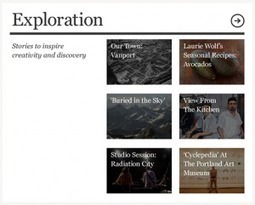



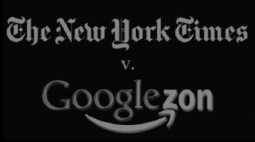
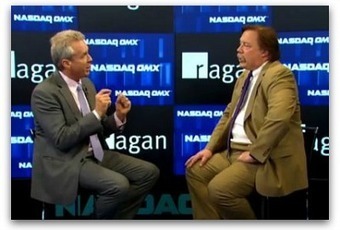



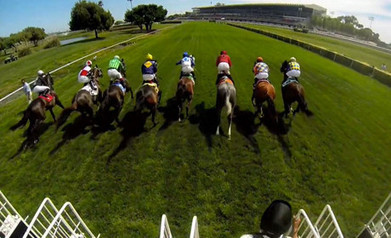



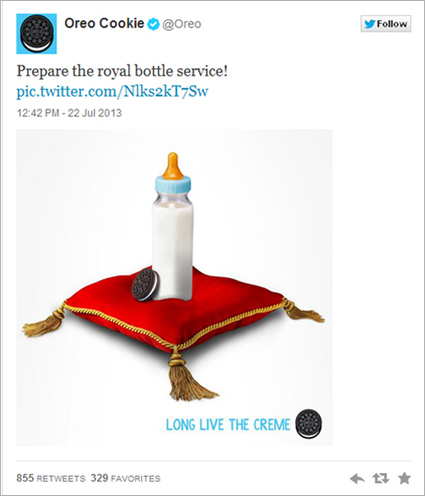










Good brand stories, good reading...